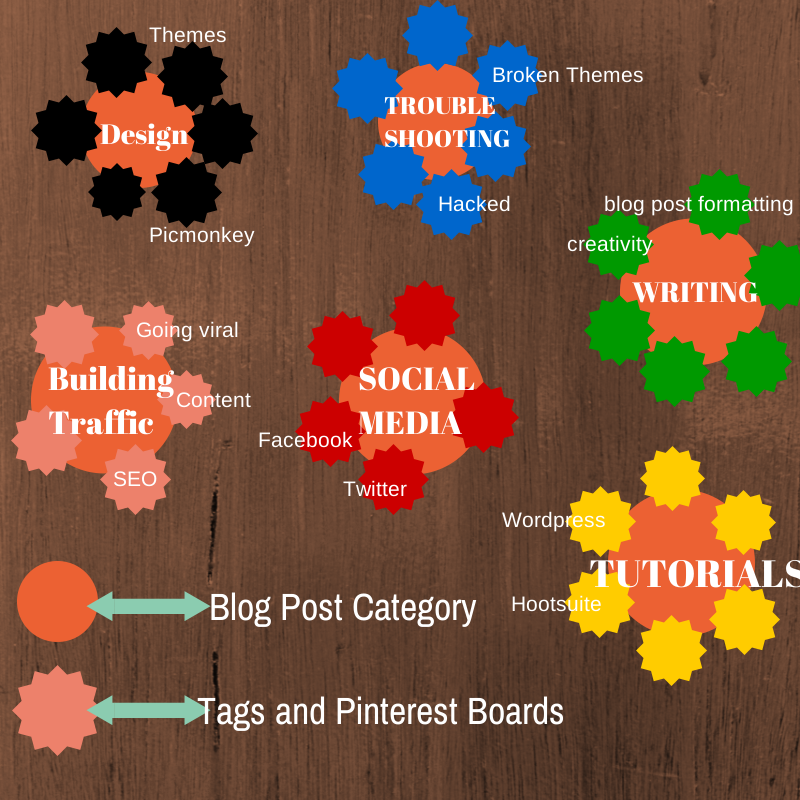Whether you’ve been blogging for a month or a decade, sometimes taking inventory of your blog and its niche, is necessary.

Take a moment and answer the following questions:
- What do you want to be known for?
- What kind of person loves your blog?
- If you had to write a one sentence mission statement for your online presence, what would it be?
- What kinds of posts do you get most excited about?
- Who are three of your favorite bloggers. What do you like about their writing?
- What about blogging drains you the most?
After you’ve answered those questions, I want you to try another exercise. Go into your blog statistics and write down the six top blog posts of all time (traffic or comment wise- depending on how you measure the success of a post).
- __________________________
- __________________________
- __________________________
- __________________________
- __________________________
- __________________________
Next to each post, put a smile or frown face if you enjoyed writing the post or not (we all know you enjoyed the traffic!). The reason I have you do this is because if your most popular posts are the ones you hate to write, you’ll get burnt out. You want to find the most popular posts you actually LOVED to write.
Now that you’ve got some preliminary research done, here’s where the real work begins.

The Word Web
Brainstorm between 6 and 10 words that encapsulate your most popular posts, and if you can’t come up with enough, broaden out to encapsulate all your writing. These words can also be phrases.
I’ll give you an example of mine for FabulousBlogging.com:
social media, writing, beginner bloggers, blogging psychology, design, wordpress
Here’s my six word brand for my personal blog:
psychology, marriage, sex, children, food, humor
The point of our blogging and social media activity is to be a storyteller right? We want to communicate feelings of surprise, joy, anger, interest, understanding, etc. For each of us, we’re going to be telling stories around our six-ten word brand. EVERYTHING should circle under those six phrases.
Your words shouldn’t be adjectives by the way. They should be subjects or topics. If you want to throw an adjective in front of it, okay – but adjectives are more about our voice as bloggers, not about niche.
Now it’s time to compare your 6-10 words with the research you did first.
- Can all your top posts fit into the six-word brand somehow?
- Can the topics you found the most enjoyment out of fit in as well?
- Did you pick a brand keyword that’s related to something you find tiring? If so, go back to the drawing board until you have keywords you’re excited about.
The goal is to pick these big overarching ideas that will fit all your writing. If you are a niche blogger, your six words can all circle around one topic. If you are a lifestyle blogger, it might be more diverse.
We’re going to dip deep now, so get out some good ol’ fashioned paper and pens. One piece of paper PER WORD.
Just so you know, this may take you more than a day. That’s okay. This process is crucial.
- Put each word in the center of a piece of paper and draw a circle around it.
- Then I want you to write down all the topics that you associate with that keyword.
An example might be Special Needs. Using that as the keyword, you may come up with words like parenting a special needs child, schooling and special needs, potty training ideas for special needs, dealing with travel, holidays, etc.
After you’re done with one word, move on to the next word, and so on- until you have 6-10 pieces of paper filled with topics.
Purge the ones that don’t interest you or are not going in the direction you’d like. When all is said and done, you can probably find 10-15 words/phrases that branch off of each of your main keywords. All this brainstorming is going to be the start of a giant source of content and storytelling for you.

Using Pinterest to Organize Your Storytelling
Start with one of the sheets of paper (so one of your original keywords). Log onto Pinterest and create as many secret Pinterest boards as you have for those associated words with that one keyword. Then I want you to pin every post that you have already written that fits with that associated word/phrase. You can also find other pins from other bloggers if you want as well!
WHY PINTEREST?
Of all the platforms, I find this visual experience really helps the blogger sort through his/her topics, where they fit, how they work together, and where they may be gaps. It also forces you to take inventory of your images that represent your posts. Finally, when you’ve done the rearranging, it’ll be all ready to go for your social platform and exposure as well!

WHY A SECRET BOARD?
The reason we want them secret is because until they have some content on them, it just looks sloppy. Also, your Pinterest feed won’t get cluttered if you’re busy moving things around. Finally, you may want to create some nice visual graphics and update those posts so they are more “Pinterest friendly”. Once the board is ready to go, you can make it public. I recommend a board not go public until it has between 5-10 pins, but that isn’t a hard and fast rule.
If you already have boards that are similar, you may be tempted to just work right on them, but I encourage you not to. It’s very easy to move the pins from the board to your secret board (and then delete the old board). If you work on live boards, you may annoy your followers. Plus chances are (if you use Pinterest like most of us), the board is probably full of stuff you haven’t fully vetted.
Here’s an example:
Let’s say one of your keywords is FRIENDSHIP and the associated words on your paper are: break-ups, your children’s friends, making new ones, how to say no, fun stuff to do for a girl’s weekend, high school reunions, etc.
You are going to come up with unique, clever, and keyword specific Pinterest board titles for these secret boards. So maybe they could be something like:
- Making and Keeping Friends
- Friendship Advice and Help
- Best Friend Weekend Ideas
- Reconnecting with High School Friends
- Finding friends for my Kid
- Neighbors as Friends
It’s great to keep the keyword in the title because people are more likely to find your board when they are searching for topics in your niche.
It’s very possible you’ll get overwhelmed if you try to create boards for every single sheet of paper you worked on. Just start with one of your main keywords. Keep your papers handy so when you have some free time, you can continue with the other words.
You will have a minimum of 36 boards when you are done (your 6 keyword brand, each of those word/s with a minimum of 6 off-shoot words or phrases to describe it). This image shows you how your word web would work if you were turning all this into categories and tags as well.

It’s time to fill those boards with yours (and other people’s content). What should happen is you’ll start to see where you’ve written a ton, and where you have uncharted territory to explore.
It’s impossible (and self-focused) to fill Pinterest boards with all your own stuff. No one person is a content authority on a particular topic, so go off in search of other blogs and web sites that have great content to share as well. In the process, you might get some new ideas.
- Go through your blog archives and find any posts that would fit on the board. It does mean you may have to repurpose/freshen/update some, but you can do that over time since the Pinterest board is still secret.
- Go through your existing Pinterest boards and move relevant pins to your new board by clicking the edit button on the pin and changing the board category on the pin. You can also just re-pin if you wish.
- Repeat this process with each of your six-ten overarching keywords until you have a boatload of secret Pinterest boards just waiting for your new blog posts.

This exercise will help you think of new ideas, see where you are top heavy, where you can write more, and perhaps just recycle old content and freshen it up. Once a Pinterest board has enough pins (with nice graphics), then you can make it public.
If at any point, you hit writer’s block, go back to your Word Webs and see what other angles you can come up with that circle that main keyword. This exercise will ensure you are on target with your niche, even if you are lifestyle blogger!
